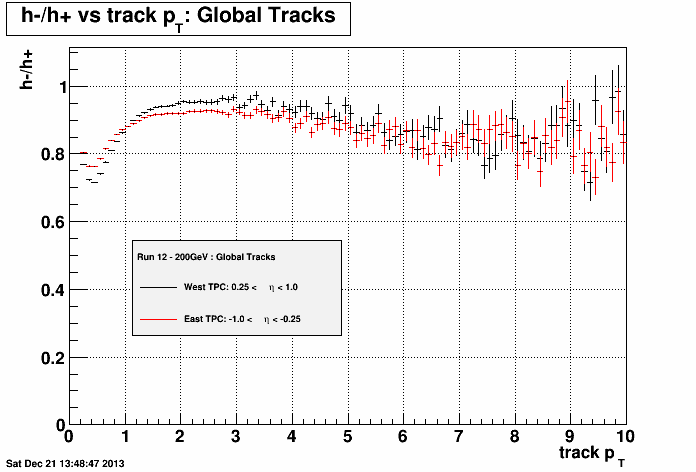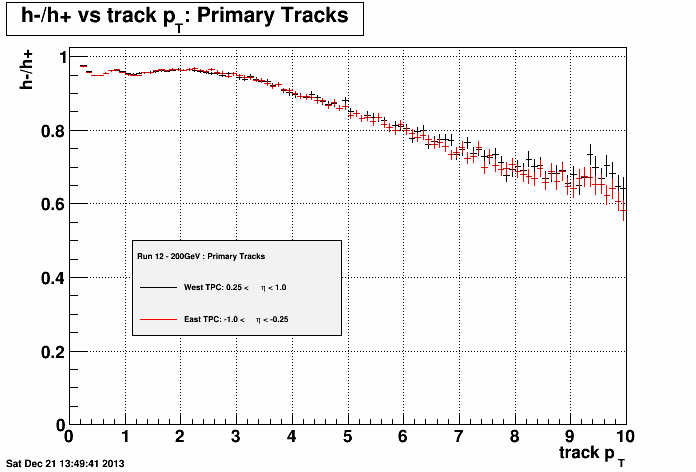- sra233's home page
- Posts
- 2019
- January (1)
- 2018
- 2017
- December (4)
- November (1)
- October (1)
- August (1)
- July (1)
- June (1)
- May (2)
- March (1)
- February (3)
- January (4)
- 2016
- 2015
- December (2)
- November (2)
- October (1)
- September (2)
- July (1)
- June (2)
- May (2)
- April (4)
- March (4)
- February (5)
- January (4)
- 2014
- December (3)
- November (3)
- October (3)
- September (2)
- August (1)
- July (3)
- June (1)
- May (3)
- March (1)
- February (5)
- January (2)
- 2013
- 2012
- My blog
- Post new blog entry
- All blogs
h-/h+ study - Run 2012 - pp200 GeV
Introduction:
The introduction and general procedure is the same as that of 500 GeV.
Refer https://drupal.star.bnl.gov/STAR/blog/sra233/2013/dec/16/hh-study-run-2012-pp500
Event and Track Selection:
Events in Run 2012 (production - P12id) that fire any of the the JP0, JP1, JP2 or AJP triggers are selected. Also, the tracks are required to be associated with the highest positve rank vertex. Tracks with nHits >12, nHits/nHistPoss > 0.51 and track pT > 0.2GeV are selected. (The 'good' RunList from Kevin, which had a total of 488 runs, was used for this study.)
Results:
The h-/h+ ratio for the global tracks in Run 12 pp200 GeV :
Figure 1

A clear seperation across all track pT (just as in pp500 GeV) can be seen from figure 1. Now we look into the h-/h+distribution for the primary tracks, in figure 2:
Figure 2

Conclusion:
The h-/h+ ratio problem, is clearly evident in the (total) Run 2012 pp200 GeV data, when we look at the global tracks. It looks much more consistent for the primary tracks (similar to that of pp500 GeV).
Details of the h-/h+ study for Run 2012-pp500 GeV can be found at
https://drupal.star.bnl.gov/STAR/blog/sra233/2013/dec/16/hh-study-run-2012-pp500
Grant Webb did the h-/h+ study for Run 9 and Run 11. The details can be found at
https://drupal.star.bnl.gov/STAR/blog/gdwebb/2011/dec/08/h-h-pp500-rff-data-run-9-and-run-11
- sra233's blog
- Login or register to post comments
